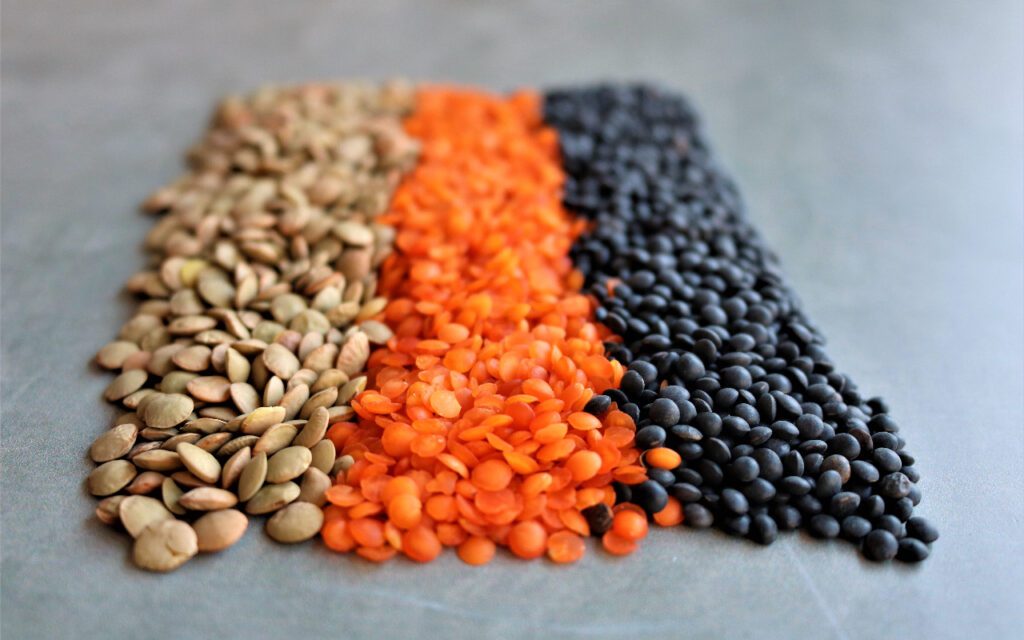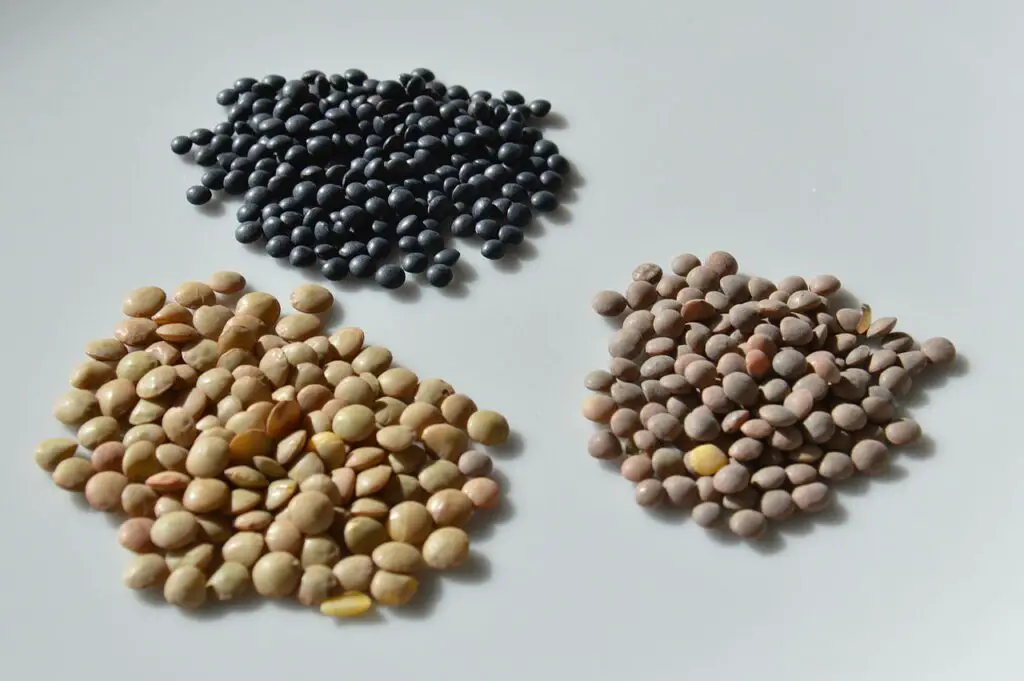As pet owners, we’re always on the lookout for new and healthy foods to add to our furry friend’s diet.
With all the talk about the benefits of plant-based diets for humans, have you ever stopped and wondered if your dog could benefit from a similar diet too?
Enter, lentils – a healthy and nutritious legume that is becoming increasingly popular as a healthy option for dogs. But the question remains: can dogs eat lentils?
As it turns out, the answer is yes! Lentils are not only safe for your furry friend to consume, but also offer a variety of health benefits.
In this article, we’ll explore some of the reasons why you might want to consider adding lentils to your dog’s diet and some tips on how to do it properly.
- Can Dogs Eat Lentils?
- How Many Lentils Can Dogs Eat?
- How Often Can Dogs Eat Lentils
- Health Benefits of Lentils To Dogs
- Potential Risks of Feeding Lentils To Dogs
- Nutritional Benefits of Lentils For Dogs
- Are Dogs Sensitive To Lentils?
- How To Prepare Lentils For Dogs
- How Fast Will Dogs Digest Lentils?
- In Conclusion
Can Dogs Eat Lentils?

Yes, dogs can eat cooked lentils! Lentils are a safe and healthy food option for dogs and are packed full of essential nutrients such as protein, fiber, vitamins, and minerals.
Not only can lentils provide your furry friend with some much-needed nutrition, but they’re also a low-fat and low-calorie option that can help with weight management.
However, it’s important to always cook lentils before serving them to your dog, as raw lentils can be difficult for them to digest.
Additionally, it’s important to avoid adding any seasonings or spices that could be harmful to your dog. By following these guidelines, lentils can be an excellent addition to your dog’s diet!
See also: 47 Safe Vegetables To Feed Your Dog. Puppy Power!
How Many Lentils Can Dogs Eat?

When it comes to feeding your dog lentils, moderation is key. Dogs should not consume lentils as the main component of their diet, but rather as a supplement to their regular meals.
A small serving size of cooked lentils a few times a week is typically safe and beneficial for dogs. The appropriate serving size for your dog will depend on its breed, size, and activity level.
It’s always a good idea to consult your veterinarian before introducing any new food to your dog’s diet to ensure that they are receiving the proper nutrition and portion sizes.
Lentils Feeding Chart According To Size
| Food | Size | Portion |
|---|---|---|
| Lentils | Toy dogs | half a cup |
| Lentils | Small dogs | half a cup |
| Lentils | Medium dogs | one cup |
| Lentils | Large Dogs | one cup |
Lentils Feeding Chart According To Age
| Food | Age | Portion |
|---|---|---|
| Lentils | 0 – 6 months | Don’t feed |
| Lentils | 6 – 12 months | half a cup |
| Lentils | 12 – 24 months | one cup |
| Lentils | 24+ months | one cup |
How Often Can Dogs Eat Lentils
Dogs can eat lentils a few times a week as a supplement to their regular meals. The frequency of feeding lentils to your dog will depend on their individual needs and dietary requirements.
It’s best to speak with your veterinarian for guidance on how often to feed lentils to your dog.
While lentils can be a healthy and nutritious addition to your dog’s diet, it’s important to remember that they should not be the main component of your dog’s diet.
A balanced and complete diet that meets your dog’s nutritional needs should always be the top priority.
Health Benefits of Lentils To Dogs
- High in Protein. Lentils are an excellent source of protein for dogs. Protein is essential for building and maintaining muscle mass, and it helps keep dogs feeling full and satisfied. Lentils contain around 9 grams of protein per half cup, making it a great option for dogs who need to maintain a healthy weight or who lead an active lifestyle.
- Rich in Nutrients. Lentils are packed full of essential vitamins and minerals like iron, folate, and potassium. These nutrients are important for maintaining overall health and can help prevent certain health conditions such as anemia.
- Support Digestive Health. One of the biggest health benefits of lentils for dogs is their high fiber content. Fiber helps keep the digestive system functioning properly and can prevent issues like constipation and diarrhea. Furthermore, lentils also contain prebiotics which can help support beneficial gut bacteria and overall gut health.
- Supports Weight Management. Lentils are lower in calories and higher in fiber as compared to many other foods. This makes them a great addition to a weight management diet for dogs. They can help your dog feel full and satisfied while consuming fewer calories.
- Easy to Prepare. Lentils are easy to prepare and can be added to your dog’s regular meals in a variety of ways. They can be cooked and mixed in with your dog’s regular food or used as a base for homemade dog treats.
Potential Risks of Feeding Lentils To Dogs
- Digestive Upset. Feeding your dog lentils in excessive amounts can cause digestive upset such as bloating, gas, or even diarrhea. It’s essential to introduce lentils into their diets gradually and monitor their response. In case any digestive issues arise, it’s best to discontinue lentil feeding immediately.
- Allergic Reactions. Some dogs may have lentil allergies or sensitivities, which can cause allergic reactions such as itching, hives, or even anaphylaxis. It’s essential to keep an eye out for any unusual or allergic-related reactions to your dog after feeding lentils. If any severe symptoms occur, seek veterinary attention immediately.
- Antinutrients. Lentils contain antinutrients that can bind with essential minerals such as iron and zinc, making them less available to the dog’s body. However, this risk is low and can be mitigated by cooking lentils correctly, soaking or sprouting them before cooking.
- Phytic Acid. Lentils contain phytic acid that can hinder the absorption of nutrients such as calcium in the dog’s body. However, this risk is low and can be mitigated by cooking lentils correctly, soaking or sprouting them before cooking.
- Imbalanced Diet. Feeding excessive amounts of lentils and using them as a substitute for a well-rounded diet can result in an unbalanced diet in dogs, leading to malnutrition, weakness, and other chronic health issues. Lentils should be used as a supplement to a dog’s diet, and not the primary source of nutrition.
Nutritional Benefits of Lentils For Dogs
| Lentils Nutrition Facts per 100 grams | % DV * |
|---|---|
| Calories | 116 |
| Total Fat | 0.4 g |
| Cholesterol | 0 mg |
| Sugar | 1.8 g |
| Glycemic Index | 18 |
| Sodium | 2 mg |
| Carbs | 20 g |
| Protein | 9 g |
| Vitamin C | 2% |
| Calcium | 1% |
| Iron | 18% |
| Potassium | 369 mg |
Are Dogs Sensitive To Lentils?
Yes, some dogs could be sensitive to lentils. Sensitive dogs may experience symptoms that range from mild to severe. These symptoms may include:
- Diarrhea
- Vomiting
- Abdominal pain
- Flatulence
- Itching
- Skin rash
- Hives
- Swelling of the face, lips, tongue, or throat (anaphylaxis)
It’s important to keep an eye out for these symptoms and seek veterinary attention if your dog experiences any unusually severe reactions after consuming lentils.
If your dog has a pre-existing medical condition, it’s best to speak to your veterinarian before introducing lentils into their diet.
How To Prepare Lentils For Dogs
Cooked Lentils
Dogs are not able to digest raw lentils properly, so it’s important to always cook them before serving them to your furry friend. Boil the lentils until they are tender, and make sure to avoid adding any spices or seasonings that could be harmful to your dog. Once they have cooled down, you can mix the lentils with some of your dog’s regular food for a healthy and nutritious meal.
Lentil Treats
If your dog loves treats, consider making some homemade lentil treats. Cook the lentils until they are tender, then mash them into a paste. Mix the paste with some whole wheat flour and eggs, and bake in the oven until they are firm. Your dog will love the taste and texture of these homemade treats, and they’ll provide a healthy and protein-packed snack.
Lentil Soup
Lentil soup can be a delicious and healthy addition to your dog’s diet. Simply cook the lentils until they are soft, add in some low-sodium chicken broth or water, and blend until smooth. Serve a small amount of soup to your dog as a special treat or mixed it with their regular food for added nutrition. Remember to avoid adding any spices, onions, or garlic which can be harmful to dogs.
How Fast Will Dogs Digest Lentils?
Dogs digest lentils at different rates depending on their breed, size, age, and overall health conditions.
Generally, lentils are a fiber-rich food and it takes longer for the body to digest fiber than other nutrients, meaning it can take an average of 8 to 10 hours for a dog to digest a meal that includes lentils.
That being said, the actual digestion time may vary from one dog to another.
Additionally, cooking the lentils can aid in breaking down their fibers and make them easier for dogs to digest.
If you are concerned about your dog’s ability to digest lentils, consult with your veterinarian.
In Conclusion
In conclusion, yes, dogs can eat lentils and can benefit from their high nutritional value.
Lentils contain an abundance of protein, vitamins, minerals, and fiber, which can help support their overall health and well-being.
However, it’s important to feed lentils in moderation and to cook them properly.
Additionally, it’s crucial to monitor your dog’s response to lentils and to watch for any signs of digestive upset or allergic reactions.
As with any new food introduced to your furry friend, it’s always best to consult your veterinarian to make sure your pet is receiving a balanced and complete diet.
Adding lentils to your dog’s diet can provide a healthy and delicious addition to their regular meals, but remember to keep portion sizes in check to ensure their overall health and well-being.





Leave a Reply